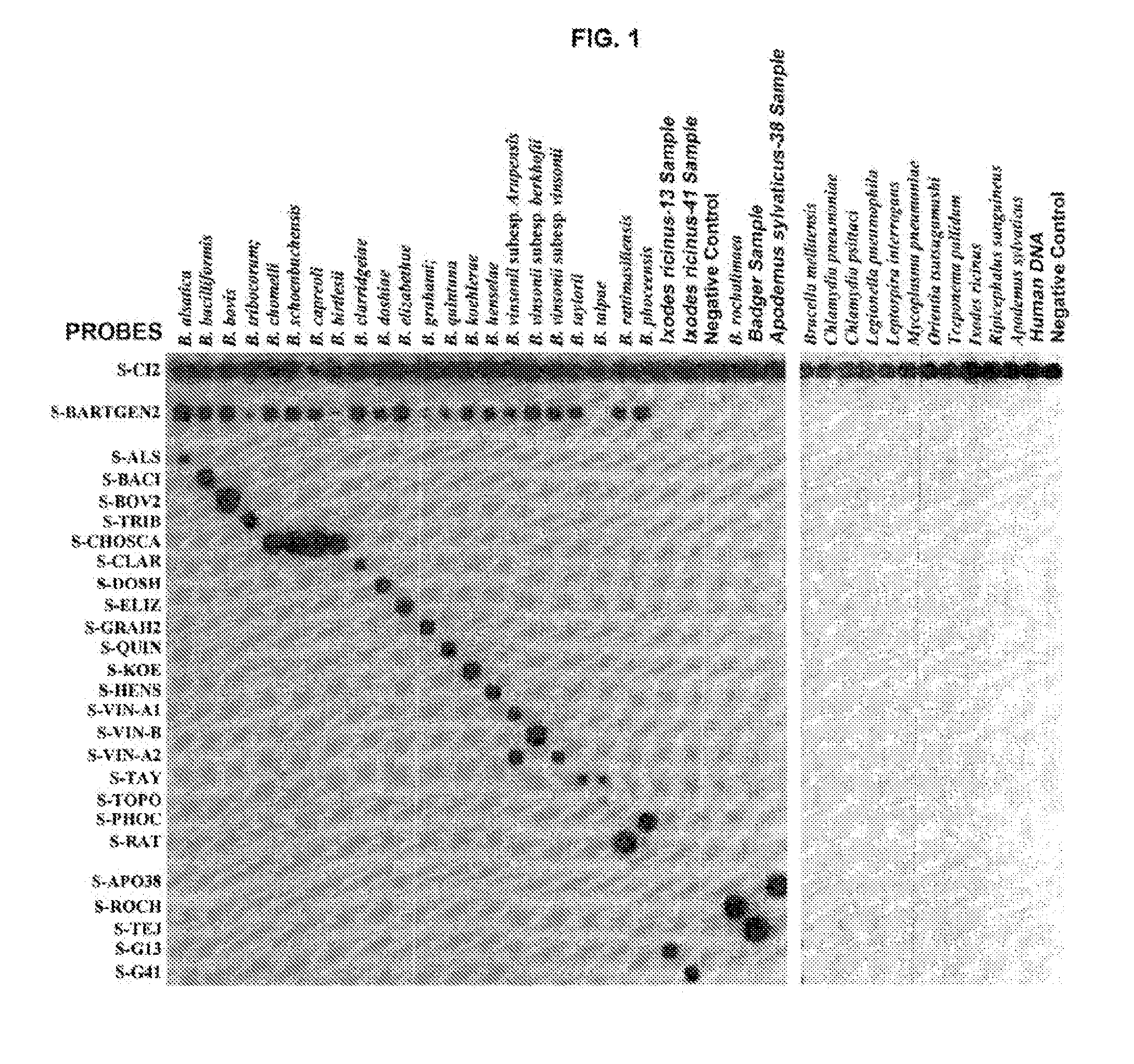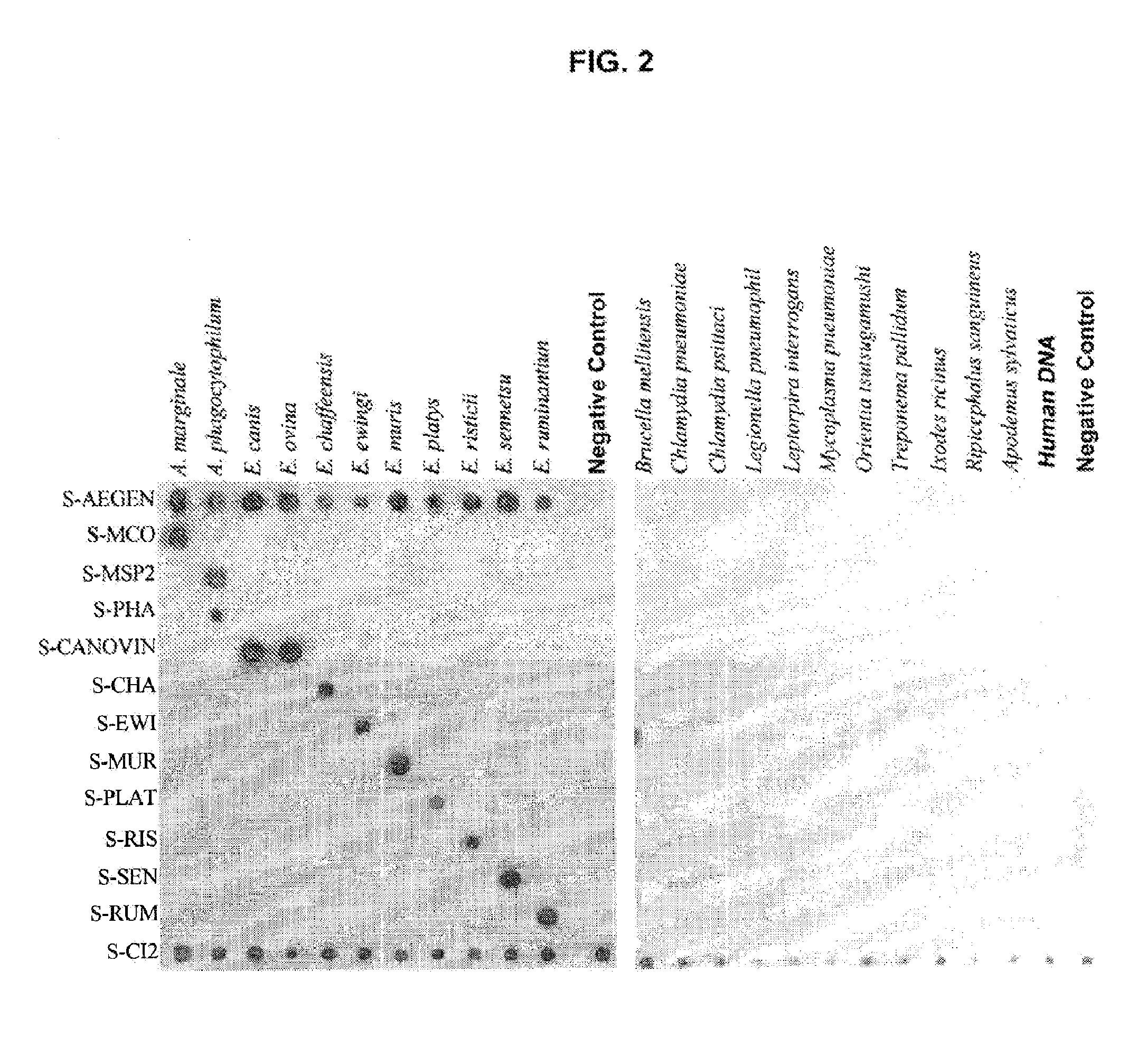Method for the detection of bacterial species of the genera anaplasma/ehrlichia and bartonella
a technology of anaplasma and bartonella, which is applied in the field of detection of bacterial species of the genera anaplasma/ehrlichia and bartonella, can solve the problems of inability to specific and fast treatment, limited molecular diagnosis methods available, and low detection efficiency, and achieves high sensitivity levels
- Summary
- Abstract
- Description
- Claims
- Application Information
AI Technical Summary
Benefits of technology
Problems solved by technology
Method used
Image
Examples
examples
Amplification, Hybridization, and Validation
[0034]This step includes the experimental analysis of the variable regions detected earlier using PCR for their validation. The isolated DNA was amplified using PCR, applying the following temperature cycle table and reaction mixture composition, together with the specific triggers used previously for said purpose.
Temperature CyclesTemperature (° C.)TimeCycles 25949′19415″ 601′40 654′657′1
PCR reaction
mixture composition for a final volume of 50 μL:
H2O:According to final DNA volumeBuffer Taq Gold LD:9 μLCl2Mg [3 mM]:6 μLdNTPs [200 mM]:1 μL × 4BSA [0.8 ug / uL]:4 μL14 specific Triggers (SEQ ID 1-2,0.5 μL of each (7 μL)SEQ ID 7-8, SEQ ID 25-26, SEQ ID28-29, SEQ ID 31-32, SEQ ID 36-37,SEQ ID 52-53) [50 pm / μL]:Taq Gold LD:0.5 μL [2.5 units]Problem DNA:maximum 800 ng
[0035]The amplicons were sequenced for their validation, verifying that the amplified sequence coincided with the variable sequences inferred from bioinformatic studies.
[0036]Subsequen...
PUM
| Property | Measurement | Unit |
|---|---|---|
| volume | aaaaa | aaaaa |
| size | aaaaa | aaaaa |
| width | aaaaa | aaaaa |
Abstract
Description
Claims
Application Information
 Login to View More
Login to View More - R&D
- Intellectual Property
- Life Sciences
- Materials
- Tech Scout
- Unparalleled Data Quality
- Higher Quality Content
- 60% Fewer Hallucinations
Browse by: Latest US Patents, China's latest patents, Technical Efficacy Thesaurus, Application Domain, Technology Topic, Popular Technical Reports.
© 2025 PatSnap. All rights reserved.Legal|Privacy policy|Modern Slavery Act Transparency Statement|Sitemap|About US| Contact US: help@patsnap.com



